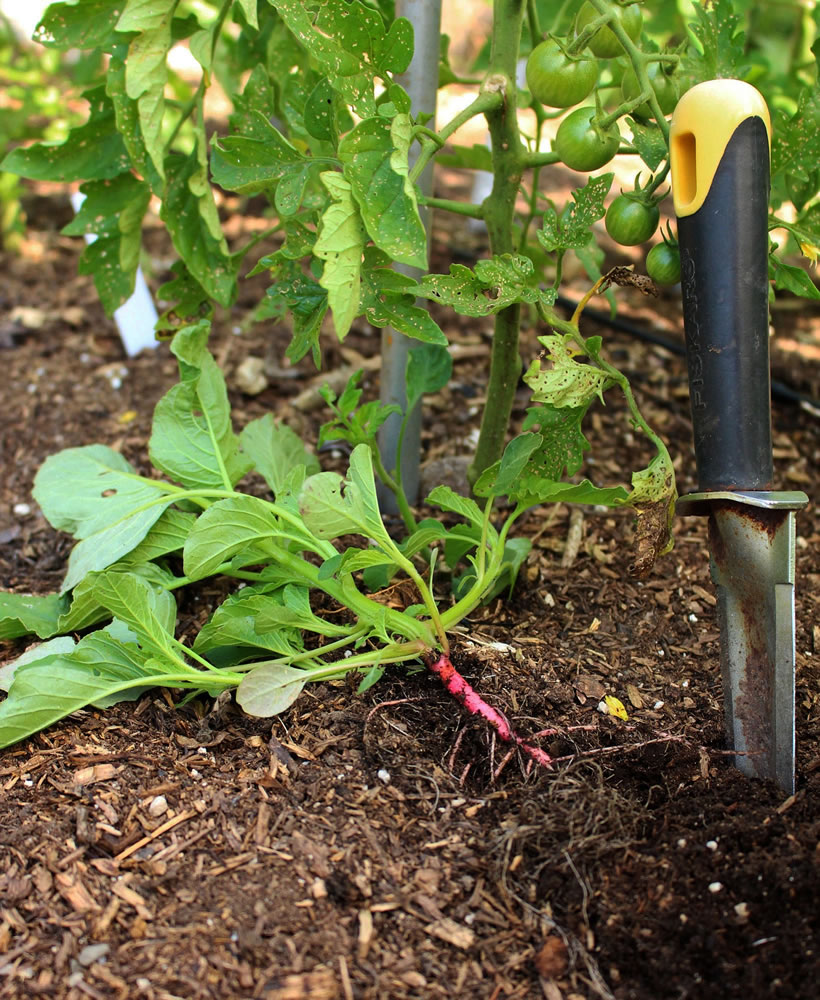Popeye ain’t the only bloke who’s gotta have spinach. Some gardeners also crave it, freshly picked.
This isn’t spinach season, though. Spinach is sensitive to cycles of night and day, and summer’s short nights induce the plants to send up flower stalks, set seed and then die, instead of growing the succulent, broad leaves they do in spring and fall. Hot weather also plays a role in inducing flower stalks.
Any gardener claiming to be harvesting spinach right now either lives in the tropics, where nights are never less than 12 hours long, or south of the equator. I guess if you lived in more northern climes and really loved spinach, you could cover the plants for a period each evening or morning, giving them more darkness during the two weeks when there are 10 hours or less of it naturally.
• SPINACH KIN.
Covering plants or moving far south seems to be more trouble than spinach justifies, especially when you could just plant a spinach substitute instead. These ersatz spinaches all bear well despite the heat and long days of summer.
Some are actually close relatives of the real thing. A familiar one — perhaps too familiar — is redroot pigweed (Amaranthus retroflexus). You’re probably already growing this “spinach” and yanking it out, for it is a common garden weed. For best eating, harvest the leaves while the plants are still young.
Redroot pigweed is but one of many amaranths; others, such as Jacob’s coat, are grown as ornamentals or for their nutritious seeds. Amaranths’ weedy nature is a plus when you grow them either for food or for ornament; their unique metabolism lets them thrive while most other plants are gasping in summer heat and dryness.
Lamb’s quarters (Chenopodium alba) is another spinach — or weed, depending on your perspective and taste buds. You should be able to find it in your garden now. It’s sometimes called goosefoot, for the leaves’ resemblance to the foot of a goose.
Another spinach relative common in gardens is Swiss chard. Chard is among the few “greens” — which include kale, collards and another “spinach” soon to be mentioned — that thrives in cool as well as warm weather. Sow chard seeds in early spring and start picking the outer leaves as soon as they are large enough to eat. Young ones keep growing from the center of the plant, which keeps bearing on into fall, often surviving even very cold winters.
• NOT KIN, BUT SPINACHY.
Not even distantly related to spinach but with “spinach” in their names are Malabar spinach (Basella rubra) and New Zealand spinach (Tetragonia tetragonioides). Sow Malabar spinach seeds indoors a few weeks before the last spring frost, and New Zealand spinach, which thrives in cool as well as hot weather, outdoors as soon as the soil thaws in spring. Don’t get impatient waiting for New Zealand spinach seeds to germinate, for they are slow and erratic in doing so.



